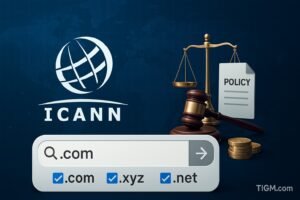When you’re bidding on expired domains, it’s easy to focus solely on the purchase price. But here’s the reality most investors learn the hard way: buying the domain is just the beginning of your financial commitment.
The Obvious Expenses
Renewal fees are the most straightforward cost. Depending on the extension, you’re looking at $10 to $50 annually per domain. Got twenty domains? That’s $200 to $1,000 per year just to maintain ownership. Premium extensions cost even more.
Marketplace listing fees add up quickly too. Some platforms charge monthly listing fees, while others take 15-20% commission on sales. That $2,000 sale you’re celebrating? The marketplace might pocket $300 to $400.
The Costs Nobody Talks About
Opportunity cost is the silent portfolio killer. Every dollar tied up in unsold domains is money that could be earning returns elsewhere. If you’ve got $10,000 sitting in stagnant inventory, that’s $10,000 not working for you in other investments.
Time matters too. Hours spent researching, bidding, managing, and selling domains could have been invested in other income-generating activities.
Portfolio management tools, DNS services, and landing page builders might seem minor at $5 to $20 monthly, but they add up to $50 to $200 annually for serious investors.
When Good Investments Go Bad
Here’s a common scenario: You buy an expired domain for $500, expecting to flip it for $2,000. Year one passes with no offers. You’ve paid $50 in renewals and $20 in listing fees. Year two brings the same result—another $70 gone. By year three, you’ve invested $690 plus countless hours into a domain that still hasn’t sold.
This is where the sunk cost fallacy kicks in. You’ve invested too much to quit now, right? So you renew for another year. And another. The longer you hold, the harder it becomes to let go, even when it’s clearly not selling.
The Smart Investor’s Approach
Successful domain investors treat their portfolios ruthlessly. They set maximum holding periods upfront—usually two to three years. If a domain doesn’t sell within that timeframe, they let it expire. No exceptions.
They calculate total cost of ownership before bidding. If holding a domain will cost $300 over three years, they won’t buy it unless they’re confident of selling for at least $500 more than that initial investment.
Quality beats quantity every time. Ten great domains that turn over regularly are far more profitable than a hundred mediocre domains bleeding renewal fees while sitting unsold.
The Real Question
Before bidding on your next expired domain, ask yourself:
What’s my exit strategy if this doesn’t sell in one year? Two years? Three years?”
If your answer is “I’ll just keep renewing because it’s a great name,” reconsider. The domain investing graveyard is full of “great names” that never found buyers.
Final Thoughts
Expired domains can be profitable investments, but success comes from understanding the true cost of ownership. The purchase price is just the entry fee. Everything that follows—renewals, fees, opportunity costs, and knowing when to walk away—determines whether you profit or slowly bleed money.
Next time you’re tempted by an auction, do the complete math. Your future self will thank you.







